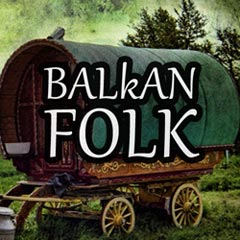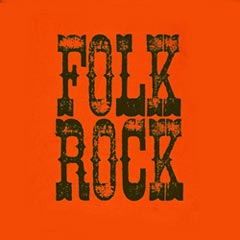Turkish Music
ON AIR - PROGRAMMING
Turkish Music is expansive and full of complexity. It ranges from rural Anatolian folk tunes to modern, soulful fusion compositions. Decades of cultural exchanges have caused Turkish Music to become its own unique genre that stands out among world music. From the haunting voices of female vocalists to rapidly plucked strings on classical instruments like the tanbur or oud, luxurious brocades of sound make up a rich tapestry that evokes soundsite unseen and experiences yet realized. Every part of Turkey holds something special when it comes to musicÑdespite thousands of years removed, Turkey's influence can still be heard reverberating across the world today. Passport in handÉ experience the streets come alive as traditional melodies resonate and heralding in untold delights! A playist with the best turkish music songs. The beauty of Turkish Music comes from its vastness and complexityÑfrom Anatolian folk tunes dating back centuries, to modern, soulful fusion compositions.
Demystifying the Beauty of Turkish Music
Music has always been a catalyst for cultural exchange and Turkey is no exception. With a legacy that spans over a millennium, Turkish Music is expansive and full of complexity. From the haunting voices of female vocalists to rapidly plucked strings on classical instruments like the tanbur or oud, luxurious brocades of sound make up a rich tapestry that evokes sounds unseen and experiences yet realized. Decades of cultural exchanges have caused Turkish Music to become its own unique genre that stands out among world music. In this blog post, we will explore the beauty of Turkish Music and the vastness and complexity that it holds.
At the heart of Turkish Music lies its Anatolian folk tunes. These traditional melodies come from the rural regions of Turkey and date back several centuries. They are simple yet profound, telling stories of love, heartbreak, and daily life in Turkey. These melodies are often accompanied by instruments such as the saz, a central Asian lute, or the kemenche, a two-stringed instrument that is bowed like a violin. Listening to Anatolian folk tunes is like taking a journey through the heart of Turkey, experiencing its people, and understanding its history.
Moving on from traditional Anatolian folk tunes, we have modern Turkish Music that fuses different genres like rock, jazz, and funk. This fusion genre started gaining popularity in the 80s and 90s. Famous musicians like Selda Bagcan and Baris Manco blended traditional Turkish Music with Western styles, creating a unique sound. Today, Turkish Music has become synonymous with experimental and contemporary music.
No discussion about Turkish Music is complete without mentioning the haunting voices of female vocalists like Sezen Aksu and Tarkan. These vocalists are a testament to the beauty and depth of Turkish Music. Their emotive and soulful singing brings lyrics to life and touches the hearts of millions. Tarkan's 1997 hit album, Dudu, remains one of the best-selling albums in Turkish Music history, with its fusion of styles and undeniable catchiness.
The instruments used in Turkish Music are as unique and diverse as the music itself. From the classical lute-like tanbur to the oud, a fretless string instrument, each instrument produces a distinct sound that is both mesmerizing and meditative. The traditional Turkish percussion instrument, the davul, is also used widely in Turkish Music. This drum is played with two sticks and often accompanies everything from traditional folk tunes to modern rock songs.
In conclusion, Turkish Music is a vast and complex genre that speaks to the heart and soul of Turkey. It showcases the country's rich history, diverse culture, and contemporary artistry. Turkish Music is a homage to the rural Anatolian folk tunes that date back centuries, yet it is also a reflection of modern times. It's undeniable that the influence of Turkish Music can still be felt decades after its inception. Its haunting melodies, emotive lyrics, and mesmerizing instrumentals blend together to create a beautiful tapestry of sound. Whether you are a fan of traditional or modern Turkish Music, it's undeniable that Turkish Music is a beautiful and immersive experience. So, if you haven't already, take a dive into the world of Turkish Music and soak in its beauty.
Demystifying the Beauty of Turkish Music
Music has always been a catalyst for cultural exchange and Turkey is no exception. With a legacy that spans over a millennium, Turkish Music is expansive and full of complexity. From the haunting voices of female vocalists to rapidly plucked strings on classical instruments like the tanbur or oud, luxurious brocades of sound make up a rich tapestry that evokes sounds unseen and experiences yet realized. Decades of cultural exchanges have caused Turkish Music to become its own unique genre that stands out among world music. In this blog post, we will explore the beauty of Turkish Music and the vastness and complexity that it holds.
At the heart of Turkish Music lies its Anatolian folk tunes. These traditional melodies come from the rural regions of Turkey and date back several centuries. They are simple yet profound, telling stories of love, heartbreak, and daily life in Turkey. These melodies are often accompanied by instruments such as the saz, a central Asian lute, or the kemenche, a two-stringed instrument that is bowed like a violin. Listening to Anatolian folk tunes is like taking a journey through the heart of Turkey, experiencing its people, and understanding its history.
Moving on from traditional Anatolian folk tunes, we have modern Turkish Music that fuses different genres like rock, jazz, and funk. This fusion genre started gaining popularity in the 80s and 90s. Famous musicians like Selda Bagcan and Baris Manco blended traditional Turkish Music with Western styles, creating a unique sound. Today, Turkish Music has become synonymous with experimental and contemporary music.
No discussion about Turkish Music is complete without mentioning the haunting voices of female vocalists like Sezen Aksu and Tarkan. These vocalists are a testament to the beauty and depth of Turkish Music. Their emotive and soulful singing brings lyrics to life and touches the hearts of millions. Tarkan's 1997 hit album, Dudu, remains one of the best-selling albums in Turkish Music history, with its fusion of styles and undeniable catchiness.
The instruments used in Turkish Music are as unique and diverse as the music itself. From the classical lute-like tanbur to the oud, a fretless string instrument, each instrument produces a distinct sound that is both mesmerizing and meditative. The traditional Turkish percussion instrument, the davul, is also used widely in Turkish Music. This drum is played with two sticks and often accompanies everything from traditional folk tunes to modern rock songs.
In conclusion, Turkish Music is a vast and complex genre that speaks to the heart and soul of Turkey. It showcases the country's rich history, diverse culture, and contemporary artistry. Turkish Music is a homage to the rural Anatolian folk tunes that date back centuries, yet it is also a reflection of modern times. It's undeniable that the influence of Turkish Music can still be felt decades after its inception. Its haunting melodies, emotive lyrics, and mesmerizing instrumentals blend together to create a beautiful tapestry of sound. Whether you are a fan of traditional or modern Turkish Music, it's undeniable that Turkish Music is a beautiful and immersive experience. So, if you haven't already, take a dive into the world of Turkish Music and soak in its beauty.
What are you thinking about?







